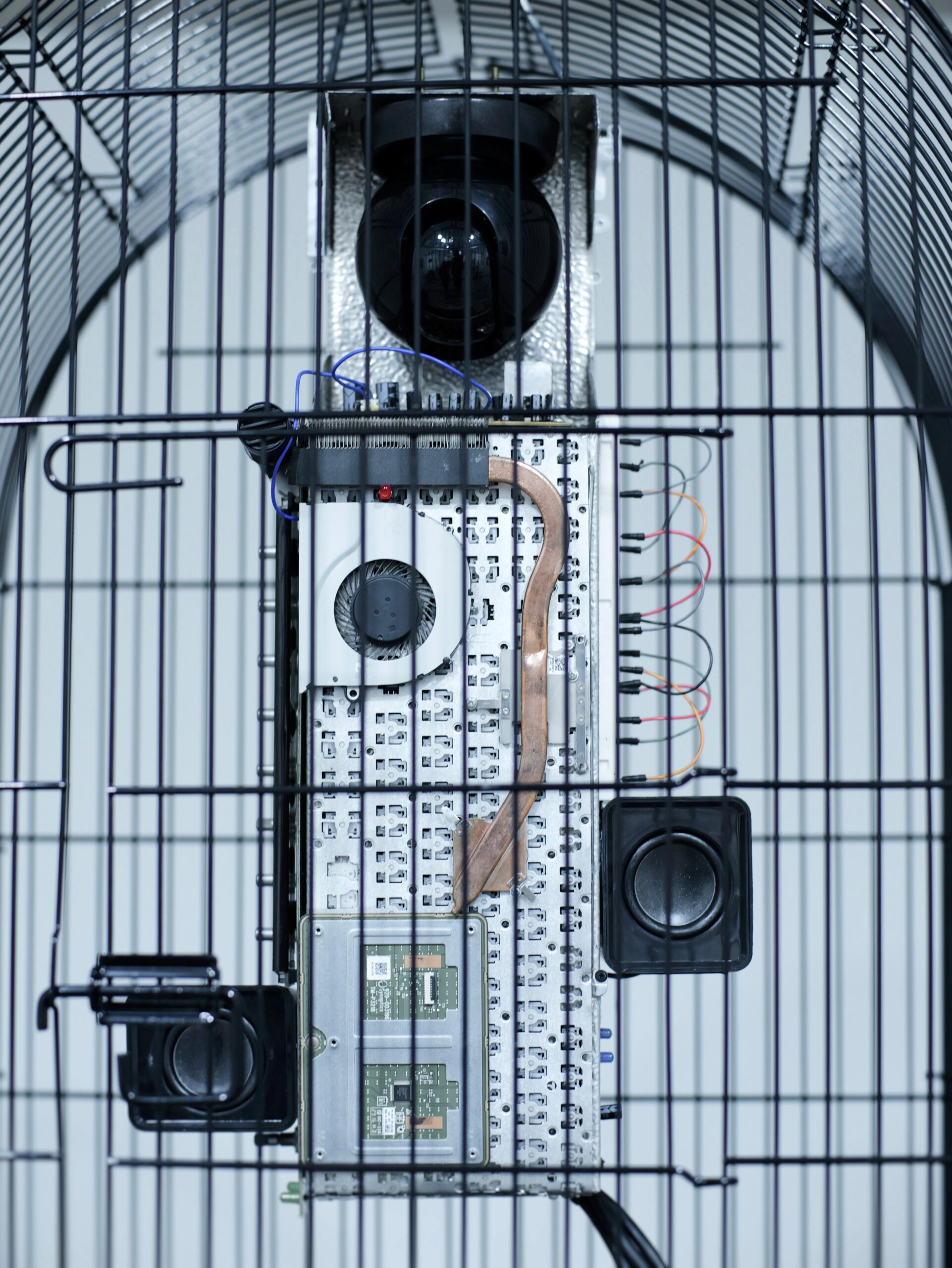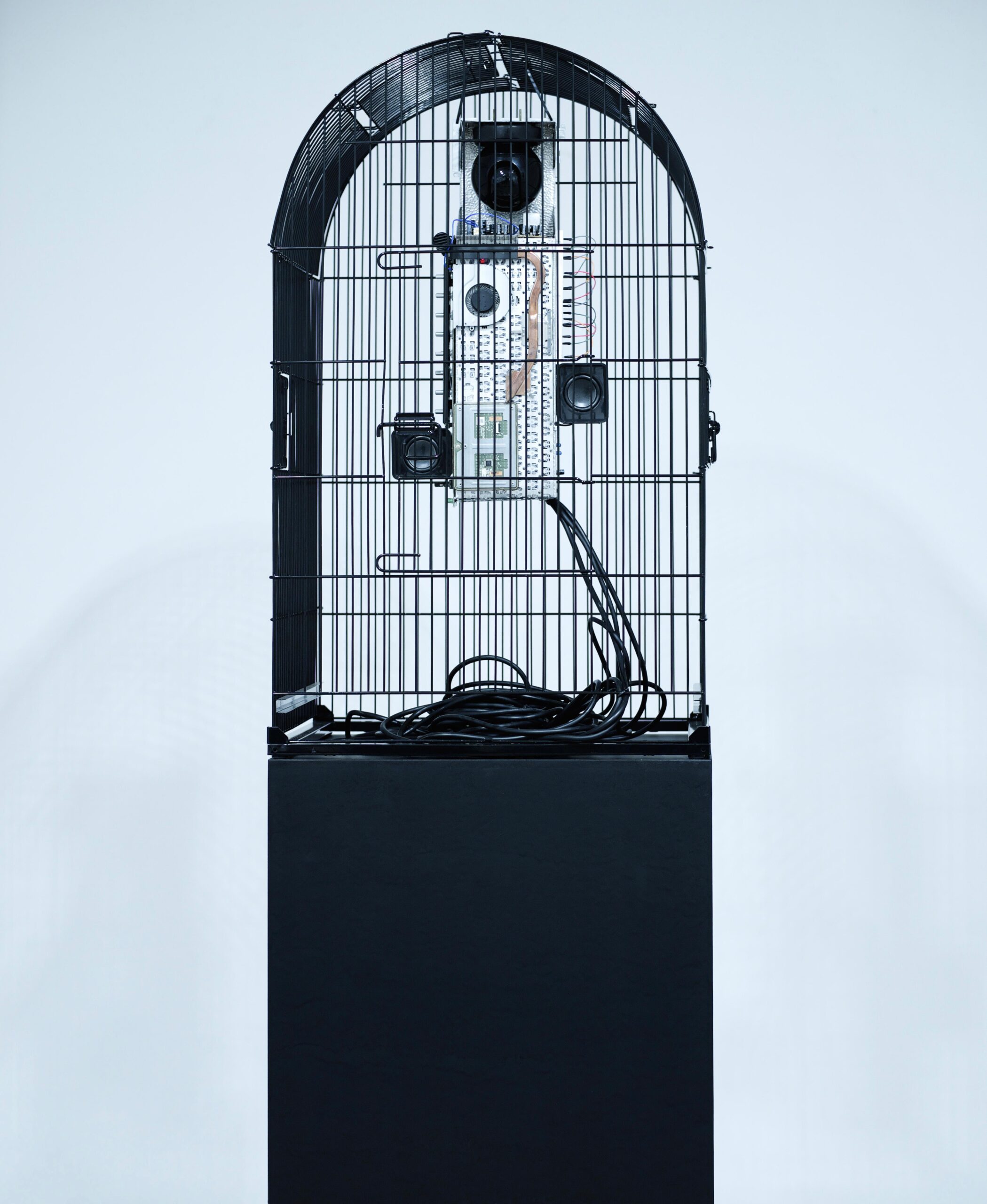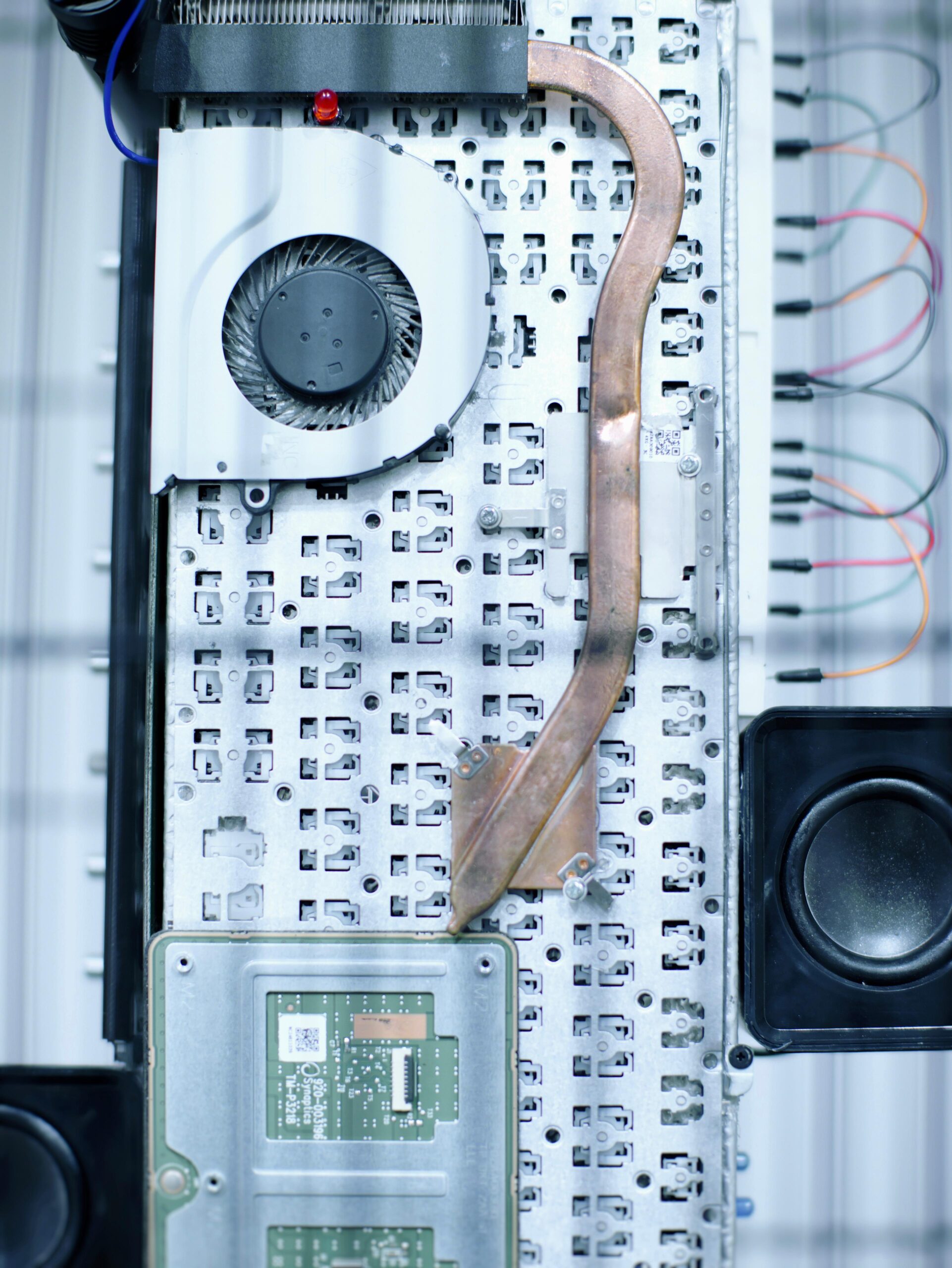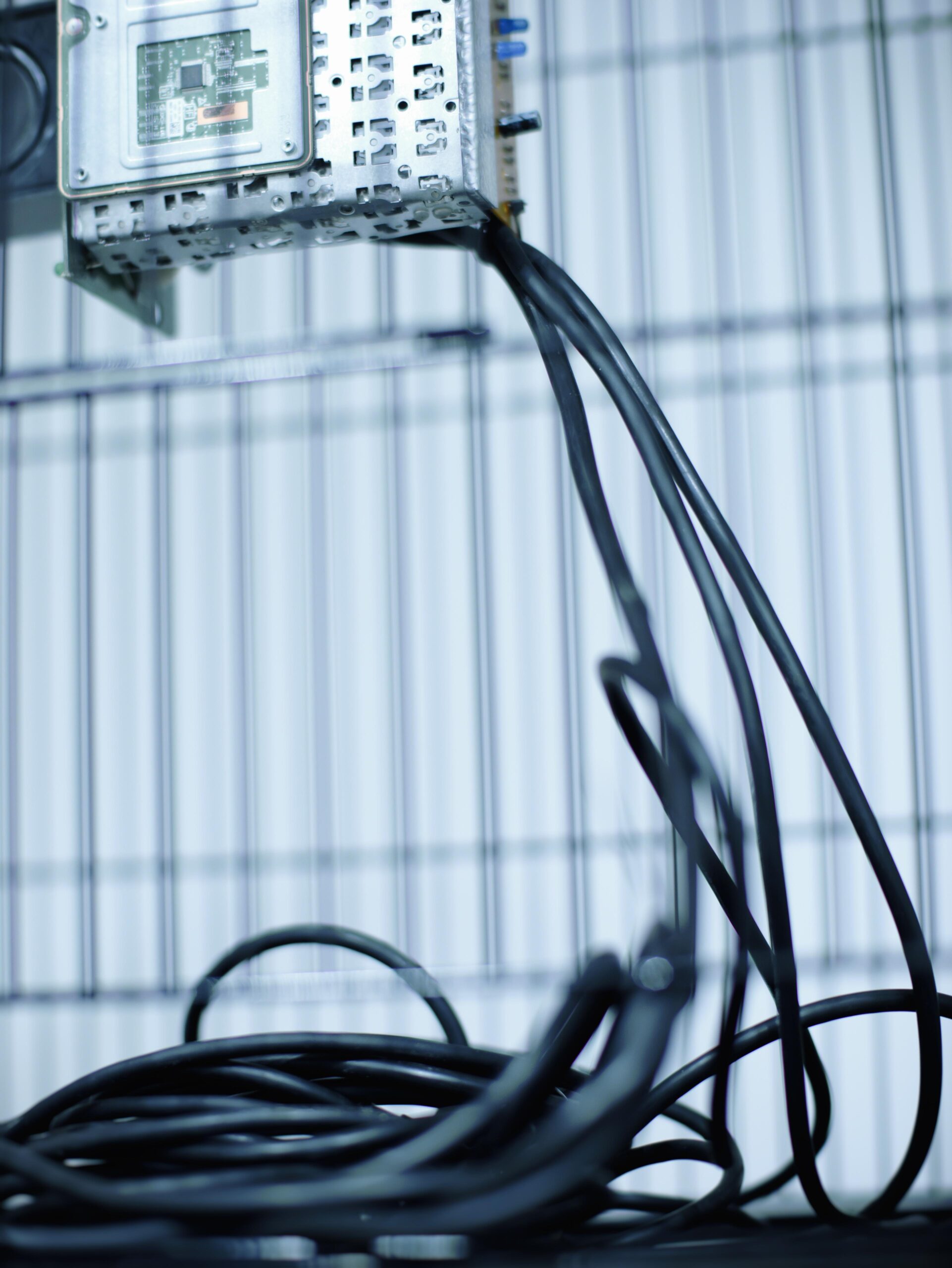
On 12 October 2024, Galleria La Nuvola di Via Margutta adheres to the 20th edition of the Day of Contemporary art, organized by AMACI (Association of Italian Contemporary Art Museums), and supported by the Ministry of Culture’s General Directorate for Contemporary Creativity. This year the event entails the involvement of MAECI’s diplomatic-consular network, composed of Embassies, Consulates and Italian Cultural Institutes.
The image-guide of this event recalls the physiognomy of the work Donna in gabbia (Woman in a Cage) (1975/2024) by Tomaso Binga (pseudonym of Bianca Pucciarelli Menna, Salerno, 1931). Such image is taken from one of her performances in 1974 in which the artist, a feminist and activist, presented herself with her head enclosed in a canary cage, being fed by male hands; it is a reflection on the concept of constrictive subalternity and inequality, on the abuse of control, often manifested in the form of care.
The cage thus becomes not only a physical but also a metaphorical barrier, a reflection on emancipation and freedom as an inalienable yet often inaccessible right.
The leitmotif of this Twentieth Edition is, therefore, the theme of accessibility, recalling all those barriers (cultural, sensory and architectural) that revolve around the social sphere, with the need to ‘rethink’ the art system through the opening of a conscious gaze on its surroundings.
The historic La Nuvola Gallery, which often addresses the public by raising awareness on current issues (an example of this is the exhibition in collaboration with Amnesty International, for the Day Against Violence Against Women), proposes for the occasion an installation created in situ by Matteo Peretti (Rome, 1975).
It is a minimal and complex work, entitled My dear AI… and curated by Alice Falsaperla, which takes the form of a bird cage, made of black iron; inside it is enclosed a conceptual paradox, exemplified by an assembled electronic structure, capable of confronting the outside world. It is an artificial brain, composed of circuit boards, microchips, audio speakers and a camera, whose shapeless set-up would seem reminiscent of ‘a living being with robotic features’.
Able to see, listen and respond, the device-friend will be able to interact with man, assimilating new information, thus assuming an autonomy of its own.
The peculiarity of this intelligence consists in its ‘animated’, ‘organic’ matrix, bred by the artist, which allows us to participate in a process of its development.
The interactive work is composed, on the one hand, of limited web information; on the other, of the capacity for a more human interaction, established precisely by Peretti (for about three hours a day). We witness the evolution of a creation as a living being, but ‘from the inside’, through the acquisition of a greater capacity for discernment on ethical issues, to the point of distinguishing ‘what is right from what is wrong’, according to an individualistic and anthropic key.
The cage becomes, here, a limit to knowledge; initially intended as a place of birth and care, it later rises to protect against its surroundings, until it becomes a space of escape, once intellectual fulfillment has been achieved.
The enclosure, here, becomes a symbol of confinement, marked by human knowledge and fears, both personal and social, from which to extricate oneself once full self-awareness has been achieved. The user, too, participates in this liberation since, through his involvement in the educational process, he is forced to suspend his direct grip on the world for a few hours, restoring energies that were hitherto unavailable. My dear AI… is an installation that tends to establish a close relationship with the public, who are so intrigued by it that they wonder if it is just artistic fiction.


